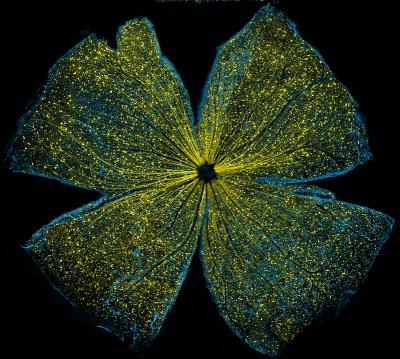
What looks like the gossamer wings of a butterfly is actually the retina of a mouse, delicately snipped to lay flat and sparkling with fluorescent molecules. High-resolution imaging of tissue as large as whole mouse retinas was made possible by a technique called large-scale mosaic confocal microscopy, which was pioneered by the National Institute of General Medical Sciences (NIGMS)-funded National Center for Microscopy and Imaging Research.
Researchers funded by the National Eye Institute show in a mammalian model the reprogramming of heritability to promote disease resilience in the next generation. The results are published in the Journal of Investigative Ophthalmology & Visual Sciences.
The researchers from Louisiana State University Health New Orleans School of Medicine used a functional measurement to document resilience to injury of the retina of adult mice that were born to parents exposed to hypoxia (reduced concentrations of oxygen) for several months prior to mating. The therapy, akin to brief exposures to high-altitude air, is considered “epigenetic” because it modifies which genes are converted into proteins in tissues throughout the body, including germ cells (sperm and eggs).
The study was led by Jeff Gidday, Ph.D., professor of ophthalmology, biochemistry, neuroscience, and physiology at LSU Health New Orleans School of Medicine.